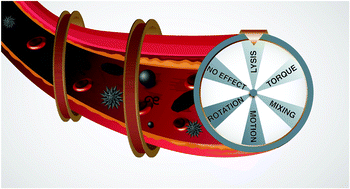Shape anisotropic magnetic thrombolytic actuators: synthesis and systematic behavior study†
Abstract
Thrombosis-related diseases are undoubtedly the deadliest disorders. During the last decades, numerous attempts were made to reduce the overall death rate and severe complications caused by treatment delays. Significant progress has been made in the development of nanostructured thrombolytics, especially magnetically controlled. The emergence of thrombolytic magnetic actuators, which can deliver tPA to the occlusion zone and perform mechanical disruption of the fibrin network under the application of a rotating magnetic field (RMF), can be considered for the next generation of thrombolytic drugs. Thus, we propose a systematic study of magnetic-field mediated mechanically-assisted thrombolysis (MFMMAT) for the first time. Four types of magnetic particles with different morphology and dimensionality were utilized to assess their impact on model clot lysis under different RMF parameters. Chain-like 1D and sea urchins-like 3D structures were found to be the most effective, increasing thrombolysis efficacy to nearly 200%. The drastic difference was also observed during the dissolution of 3 days old blood clots. Pure plasminogen activator had almost no effect on clot structure during 30 minutes of treatment while applying MFMMAT led to the significant decrease of clot area, thus uncovering the possibility of deep venous thrombosis therapy.



 Please wait while we load your content...
Please wait while we load your content...